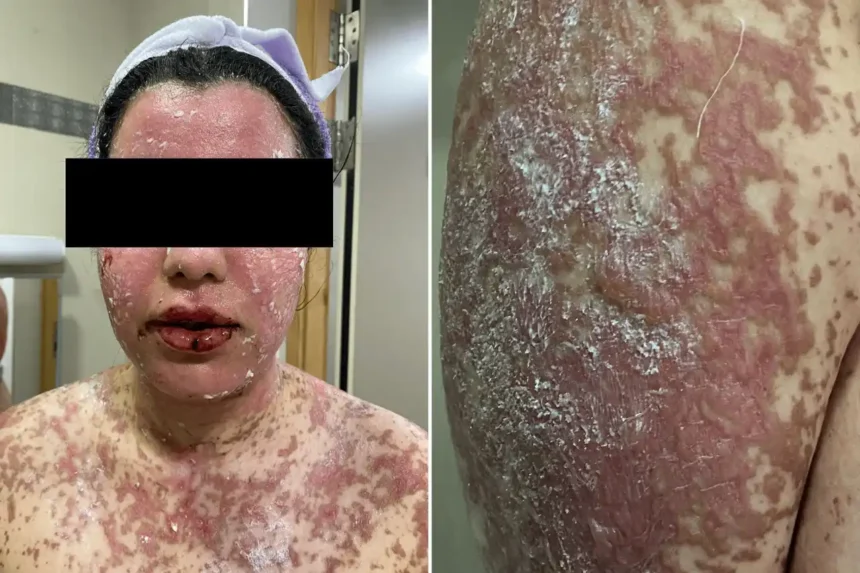A YOUNG woman saw nearly a third of her skin peel away in sheets just days after starting a new medication.
The 24-year-old had been prescribed lamotrigine, a drug commonly used on the NHS to treat mood disorders and epilepsy.



But just days after starting the medication to treat her bipolar, she noticed a red rash spreading rapidly across her body.
By day four she decided to head to the hospital after the marks started blistering and large areas of skin started falling off.
Doctors treating her at Cheikh Khalifa International University Hospital in Morocco quickly diagnosed her with Lyell’s syndrome, also known as toxic epidermal necrolysis (TEN).
This is a rare but life-threatening reaction to a medication – which in this case was lamotrigine. But it has also been associated with antibiotics, and anti-inflammatory painkillers like ibuprofen.
Read more on burns
It happens when the body overreacts to a drug causing the outer layer of skin, known as the epidermis, to detach and peel away in sheets, exposing the raw, sensitive tissue beneath.
In previous reports survivors of the condition have described the experience as feeling like they were being ‘burned from the inside out’ or ‘cooked alive, due to the intense pain and widespread skin loss it triggers.
In worst-case scenarios, it can leave those affected vulnerable to life-threatening complications like sepsis and organ failure – it carries a mortality rate between 20 and 40 per cent.
In this case, published as part of a report in the journal Cureus, almost 30 per cent of her body surface area had been affected including her chest, back, arms, and thighs.
Large sections of skin had already sloughed off by the time she arrived at hospital, leaving painful, exposed areas that had to be treated like serious burns.
Doctors also noted that her mucous membranes were involved, meaning the reaction had affected not just her skin but also the inside of her mouth and genitals, a common but dangerous feature of TEN.
Once admitted, the unidentified woman was transferred to a specialist burns unit, as TEN causes skin damage similar to that seen in people with major burn injuries.
“TEN is often described as a severe burn-like skin reaction because it causes widespread epidermal necrosis and detachment similar to that seen in patients with extensive burns,” the authors of the report wrote.
After intensive treatment in the burns unit including wound care, pain relief, and fluid replacement she began to recover.
Doctors immediately stopped the lamotrigine to prevent further skin damage and prescribed another medication to manage her bipolar disorder safely.
The authors stressed that while TEN is a rare reaction, patients starting drugs like lamotrigine should be monitored closely for early symptoms such as fever, rash, and blistering.
“The early recognition and discontinuation of the offending drug is crucial in improving patient outcomes,” they concluded.
What is Lyell’s Syndrome?
Lyell’s syndrome, or toxic epidermal necrolysis (TEN), is a rare but serious skin reaction usually caused by certain medications.
It causes the skin to peel off in large sheets, leaving raw areas vulnerable to infection and fluid loss.
It often affects the mouth and genitals too.
Common triggers include antibiotics, anti-inflammatory painkillers like ibuprofen, and drugs for epilepsy or mood disorders.
Treatment requires hospital care, often in a burns unit, and stopping the triggering drug immediately.
Without quick treatment, it can be fatal, with a death rate of 20–40%. Early medical help is essential.















